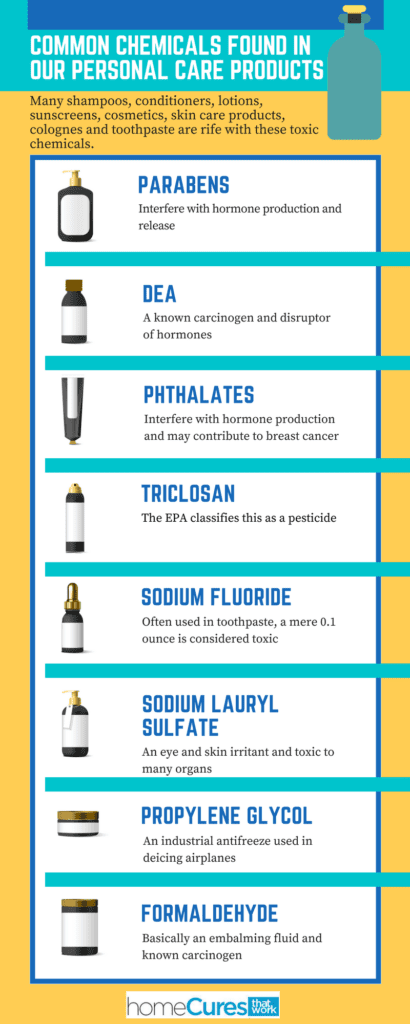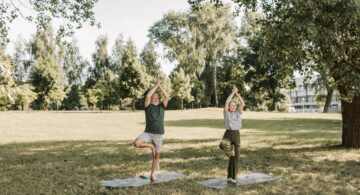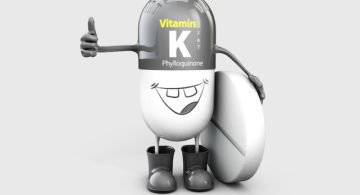8 Dangerous Chemicals In Your Body Care Products
I had just picked up a can of deodorant, removed the cap and prepared to spray my underarms when I saw a huge, hairy spider scrambling across the top of the dresser in front of me. I simply reacted by turning the deodorant on this hideous intruder and giving it a good blast.
To my utter amazement, the spider immediately flipped over on its back and its legs crumpled. The deodorant had killed it quicker than any insecticide I’d ever used. I looked at the dead spider, then looked back at the can of deodorant in my hand and decided, “I’m not spraying that under my arms!”
Since learning how well my deodorant served as a pesticide, I’ve done a bit of research. I discovered, “Most conventional deodorants contain a slew of toxic chemicals, such as aluminum chlorohydrate, parabens, propylene glycol, triclosan, TEA, DEA, FD&C colors, and Talc, among others.”[1]
For instance, let’s look at the chemical aluminum chlorohydrate that is commonly found in deodorants and antiperspirants. This chemical is made by exposing aluminum to hydrochloric acid. In this new state, the chemical upsets the pH balance of the skin and its production of perspiration.
But the Material Safety Data Sheet (MSDS) provided by Science Lab.com, lists aluminum chlorohydrate as “Hazardous in case of skin contact (irritant). In case of contact, immediately flush skin with plenty of water. Cover the irritated skin with an emollient. Remove contaminated clothing and shoes.”[2] Yikes! And we want to put that on the tender skin of our underarms—and so close to lymph glands?
Or consider the health risks of DEA (Diethyl phthalate). The MSDS on DEA cautions that this substance may be toxic to the liver and central nervous system. “Repeated or prolonged exposure to the substance can produce target organ damage. In case of spill, full suit, boots, gloves and splash goggles must be worn.”[3] Despite the warning, how is it okay to spread it on your underarms after stepping out of the shower!?
In fact, most body care products contain materials that would require hazmat training and protective equipment in an industrial setting. And harmful ingredients in your blood can have potentially deadly effects on your body. Yet we freely apply these to our skin and put them in our mouths.
Who has Oversight of Chemicals in our Personal Care Products?
If these common ingredients in personal care products are so bad, how do manufacturers get away with using them in skincare products? Doesn’t the FDA oversee and police these issues? The FDA does have oversight in terms of approval, but the personal care industry is highly unregulated. The law under which the FDA operates in this regard has not been updated since 1938.[4]
Typically, the FDA relies on research performed by the manufacturer to demonstrate the safety of a product. The problem with that system is conflict of interest and research that could hardly be touted as impartial.[5]
Labeling is also misleading. The word “natural” is totally unregulated, and even “organic” in the context of body care products is left to the interpretation of the manufacturer. And when it comes to “fragrance,” there’s definitely a fly in the ointment. As many as 38 chemicals not listed on labels in name-brand fragrances have been identified in laboratory tests.[6]
Knowing these things leaves us feeling deceived and lied to. Here we are, trying to care for our bodies only to discover that many of the products we’re using are hazardous to our health.
Also, when it comes to putting things on our skin, we used to think of skin as a protective covering, or barrier rather than the largest organ of the body. Our skin is amazing adept at absorbing what we put on it. So, if we’re putting harmful chemicals on our skin, these toxins invariably find their way into our bloodstream and internal organs.
A Quick Look at other Common Personal Care Products
Many shampoos, conditioners, lotions, sunscreens, cosmetics, skin care products, colognes and toothpaste are rife with toxic chemicals. Harvard School of Public Health claims that the average American is exposed to more than 100 chemicals from personal care products even before leaving home for work.[7]
Some of the more common chemicals found in our personal care products include:
- Parabens – interfere with hormone production and release[8]
- DEA – a known carcinogen and disruptor of hormones[9]
- Phthalates – interfere with hormone production and may contribute to breast cancer[10]
- Triclosan – the EPA classifies this as a pesticide[11]
- Sodium fluoride – often used in toothpaste, a mere 0.1 ounce is considered toxic[12]
- Sodium lauryl sulfate – an eye and skin irritant and toxic to many organs[13]
- Propylene glycol – an industrial antifreeze used in deicing airplanes
- Formaldehyde – basically an embalming fluid and known carcinogen[14]
If you look at the label of your personal care products and see any of the chemicals above, you’re now faced with an important decision.
What’s a Body to Do?
With the lack of regulation and all the hidden chemicals, it’s difficult to rely on label-reading to make your personal care product purchases. So there are two basic options left to us:
- Find companies that make truly natural, healthful products. Maintaining beauty may require sacrifices, but sacrificing your health should not be one of them. There are plenty of deodorants out there that don’t contain harmful ingredients and get the job done naturally. For example, Alba, Burt’s Bees, Kiss My Face, MooGoo, Pacifica, Shea Moisture, Shikai, Tru Energy, Uncle Harry’s Natural Products, etc. are all companies that profess to produce all-natural products.
- Make your own products! At WellnessMama.com, you’ll find perhaps one of the largest collections of natural body and beauty recipes. Below, are three to try out.
Spray Deodorant Recipe[15]
Ingredient
- 4 ounces magnesium oil
- 10-15 drops of your favorite essential oils or a mixture
- A 4 ounce or larger glass spray bottle
Instructions
- Make the magnesium oil if using homemade magnesium oil.
- Pour magnesium oil into glass spray bottle and add any essential oils.
- To apply: spray a small amount on underarms and rub in gently. Let dry for about 5 seconds.
Homemade Body Wash[16]
Ingredients
- 3 Tablespoons liquid castile soap
- 3 Tablespoons raw honey
- 2 Tablespoons oils (I used 1 TBSP each of castor oil and olive oil)
- 10 drops of essential oil of choice (or more for your preferences)
Instructions
- Carefully mix all ingredients by hand with a spoon in a glass liquid measuring cup. Do not use a blender, whisk or had mixer as this will create bubbles and make it impossible to get into a container.
- Pour into a (preferably glass) container and use in the shower as a body wash. Apply with a natural sea sponge for ease of use.
Homemade Lotion Bars[17]
Ingredients
- 1/3 cup shea butter, cocoa butter or mango butter (or a mix)
- 1/4 cup beeswax pastilles (measured dry)
- 1/3 cup coconut oil, or 1/4 cup liquid oil like olive, hazelnut or almond
- Essential oils of choice
Instructions
- Combine the butters, beeswax pastilles, and coconut oil in the top of the double boiler or in a mason jar sitting on a wash cloth in a small saucepan.
- Put about an inch of water in the bottom of the double boiler or in the saucepan and bring to a boil.
- Reduce heat to a simmer and stir the top mixture carefully until all ingredients have melted. NOTE: Be careful not to get any water into the butters/oil mixture as it can ruin the bars.
- Once all ingredients have melted, remove from heat and add essential oils.
- Stir essential oils in and quickly and carefully pour into the plastic deodorant molds. If possible, transfer to the refrigerator to harden or let sit on the counter for 4-6 hours or until completely cooled.
Please keep in mind that no two bodies are alike. A deodorant that works on you may not work on your spouse or somebody else. That goes for all personal care products.
For an all-natural skincare system, check out Tru Energy and their optimizing wand for an at-home facelift.
Sources:
[1] Natural Cosmetic News, “Dangerous Chemicals in Deodorant & Antiperspirant: A Detailed Review of the Chemicals, Research & Avoidance Tips,” nd, http://www.naturalcosmeticnews.com/toxic-products/dangerous-chemicals-in-deodorant-antiperspirant-a-detailed-review-of-the-chemicals-research-avoidance-tips/.
[2] ScienceLab.com, “Aluminum Chlorohydrate MSDS,” May 21, 2013, http://www.sciencelab.com/msds.php?msdsId=9925582.
[3] ScienceLab.com, “Diethyl phthalate MSDS,” May 21, 2013, http://www.sciencelab.com/msds.php?msdsId=9923754.
[4]Amy Roeder, “Harmful, Untested Chemicals Rife in Personal Care Products,” Harvard School of Public Health, February 13, 2014, http://www.hsph.harvard.edu/news/features/harmful-chemicals-in-personal-care-products/.
[5] Dr. Mercola, “Best-Selling Toothpaste Contains Hazardous Endocrine-Disrupting Chemical,” August 27, 2014, http://articles.mercola.com/sites/articles/archive/2014/08/27/triclosan-toothpaste.aspx.
[6] Dr. Mercola, “Is Your Perfume Poison?” November 27, 2013, http://articles.mercola.com/sites/articles/archive/2013/11/27/toxic-perfume-chemicals.aspx.
[7] Amy Roeder.
[8] Dr. Mercola, “Is Your Perfume Poison?”
[9] William Lynch, “What Are the Harmful Ingredients in Toothpaste?” Livestrong, March 12, 2014, http://www.livestrong.com/article/167101-what-are-the-harmful-ingredients-in-toothpaste/.
[10] Shannon Marks, “Skin Lotion Ingredients to Avoid,” Livestrong.com, August 16, 2013, http://www.livestrong.com/article/89548-skin-lotion-ingredients-avoid/.
[11] William Lynch.
[12] William Lynch.
[13] William Lynch.
[14] Vanessa Cunningham, “10 Toxic Beauty Ingredients to Avoid,” Huffington Post, January 23, 2014, http://www.huffingtonpost.com/vanessa-cunningham/dangerous-beauty-products_b_4168587.html.
[15] Wellness Mama, “Spray Deodorant Recipe,” nd, http://wellnessmama.com/22357/spray-deodorant-recipe/.
[16] Wellness Mama, “Homemade Natural Body Wash,” nd, http://wellnessmama.com/23862/homemade-natural-body-wash/.
[17] Wellness Mama, “How to Make Lotion Bar Sticks,” nd, http://wellnessmama.com/15193/lotion-bar-sticks/.

























